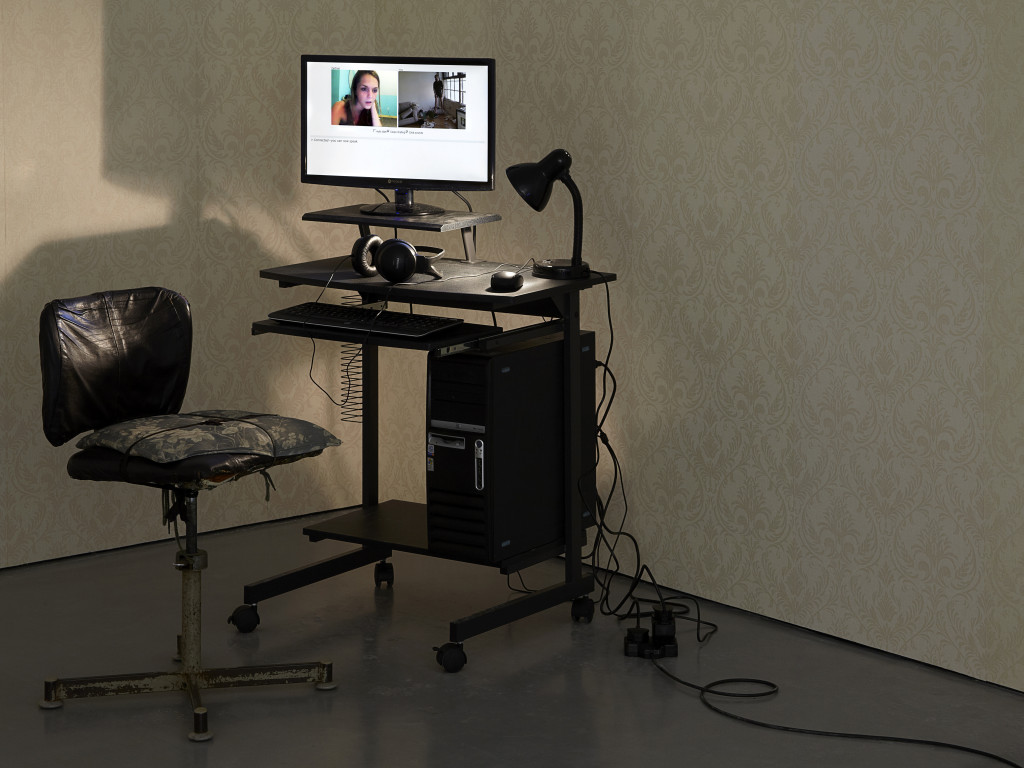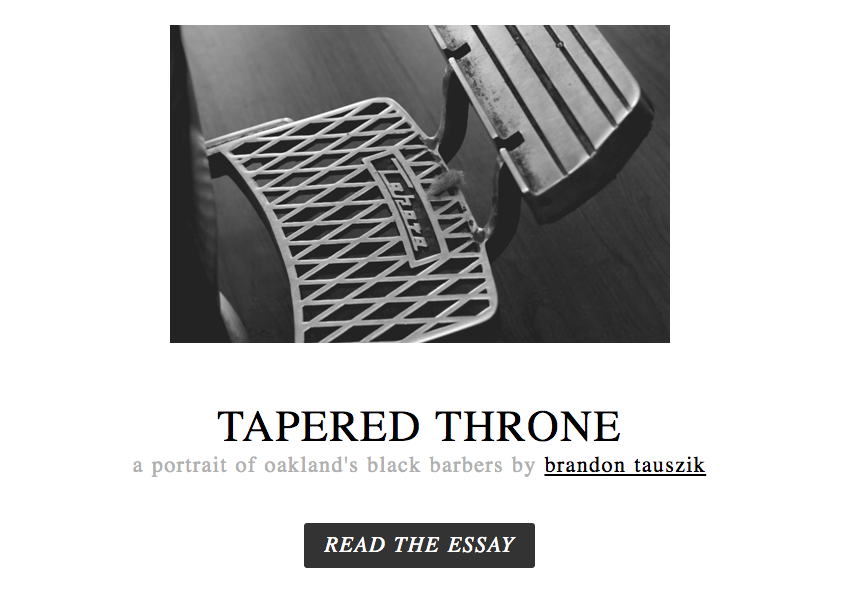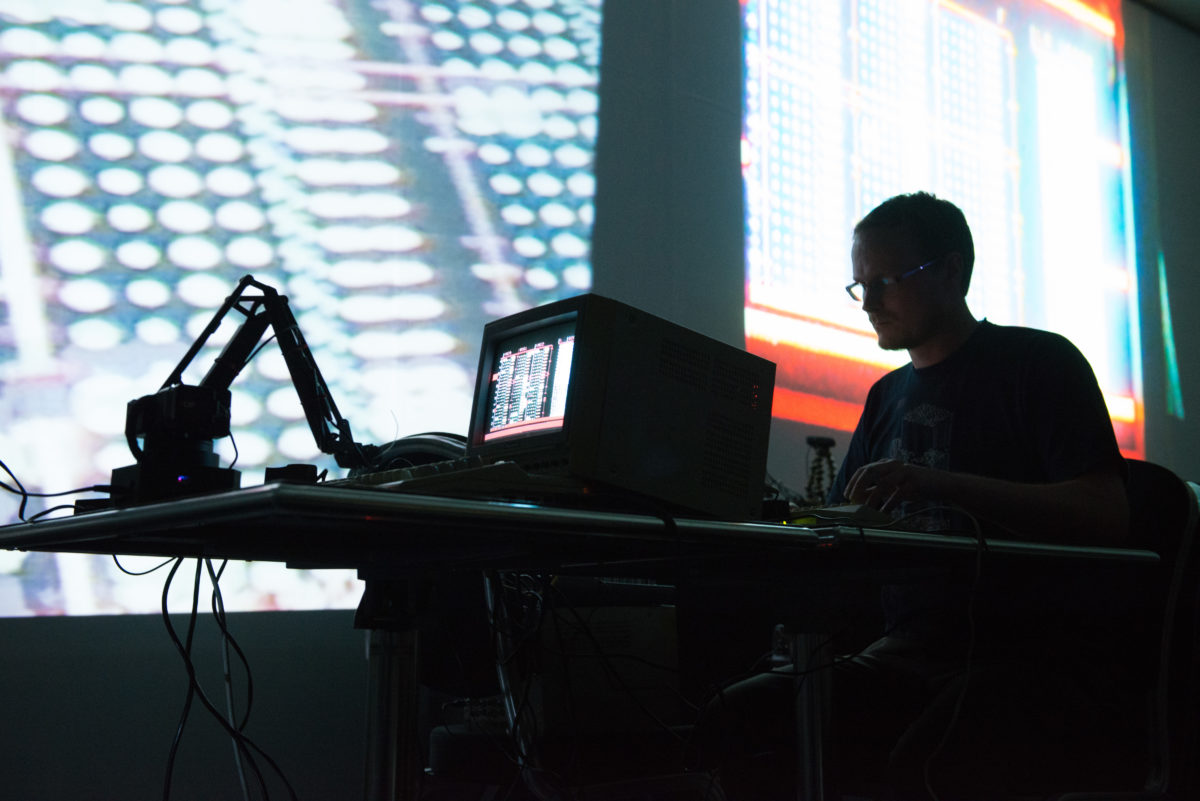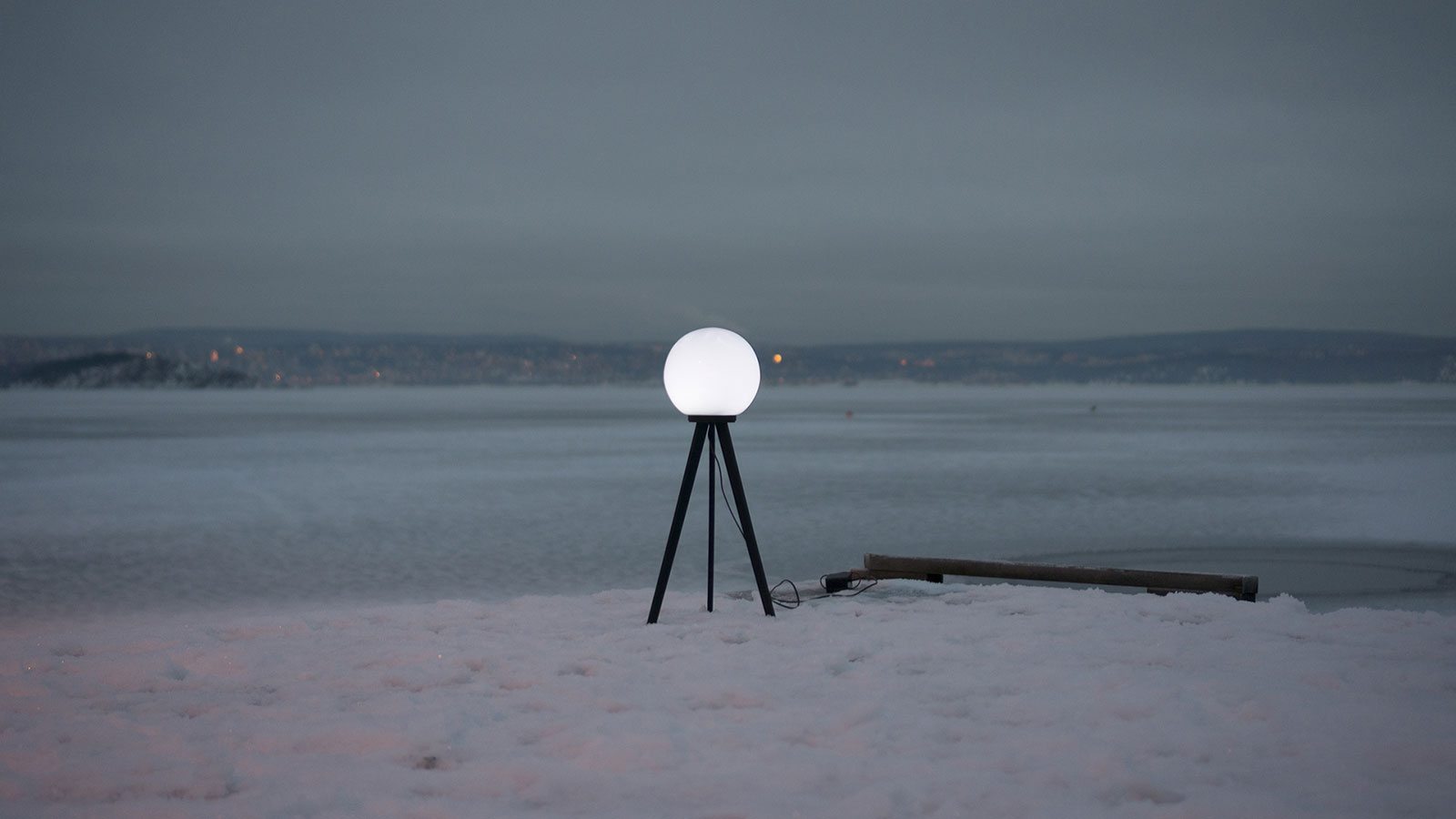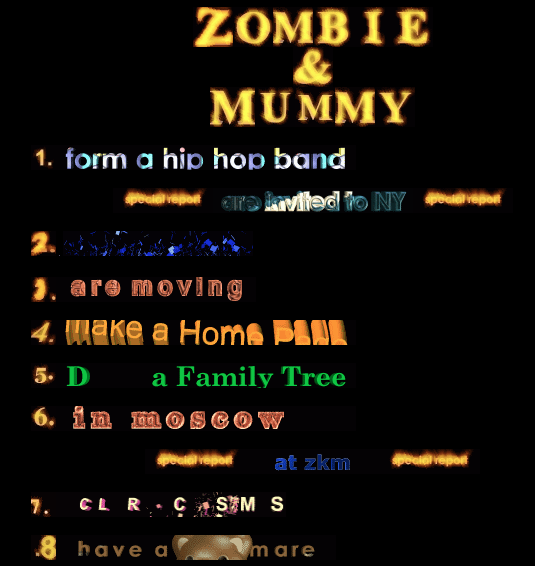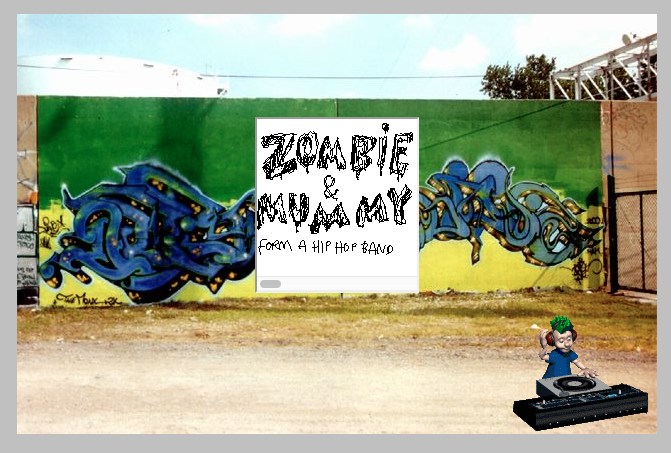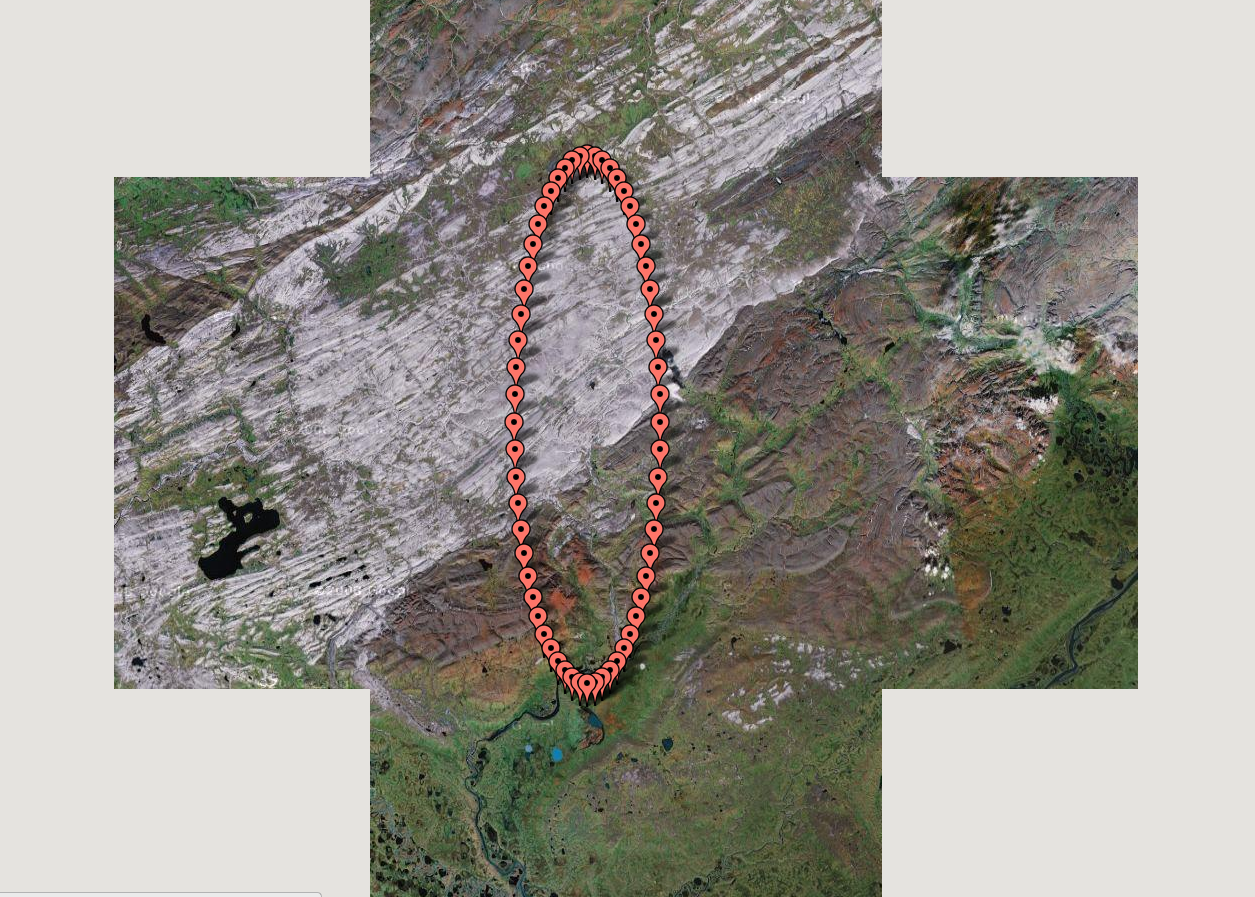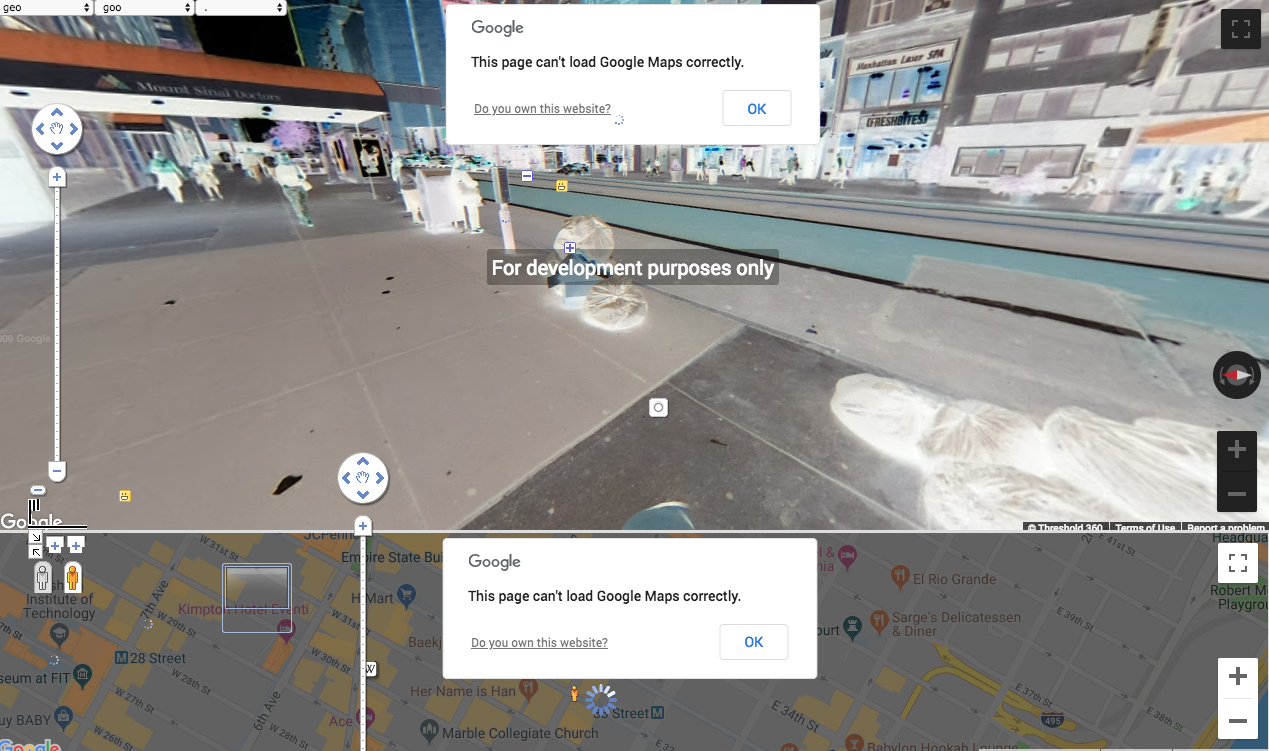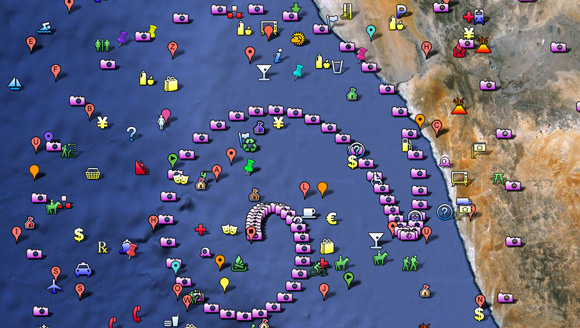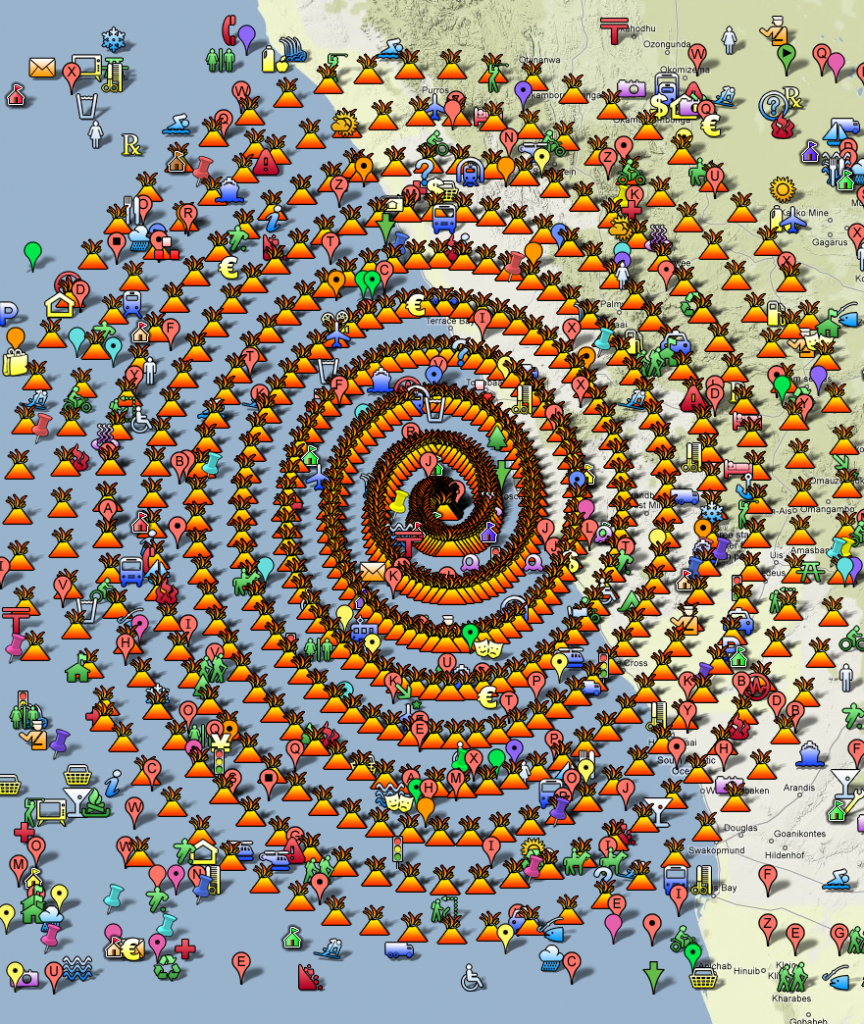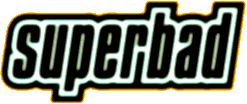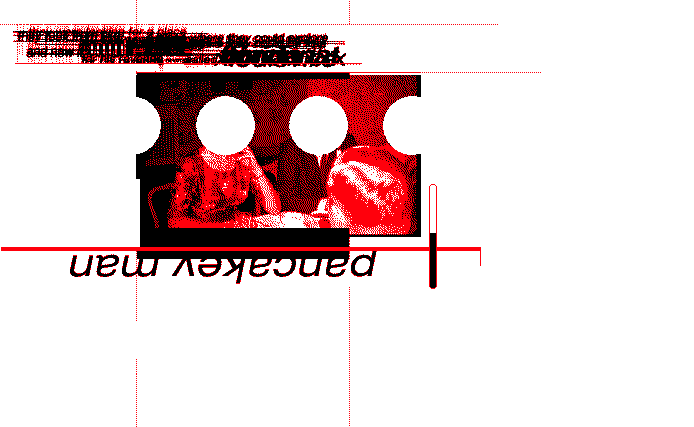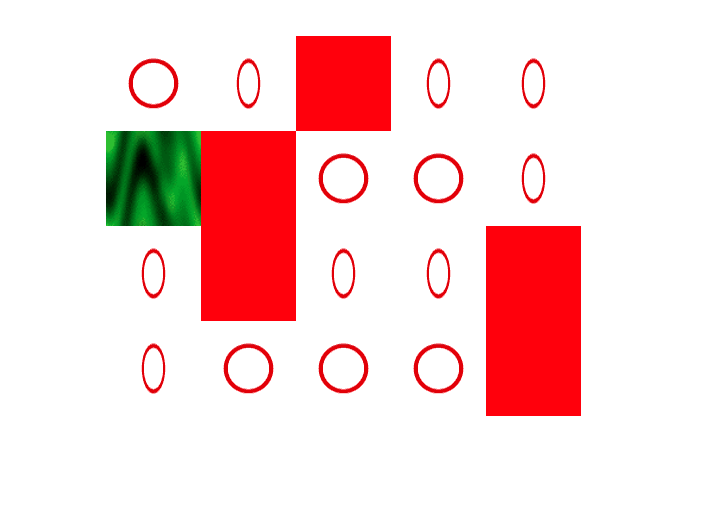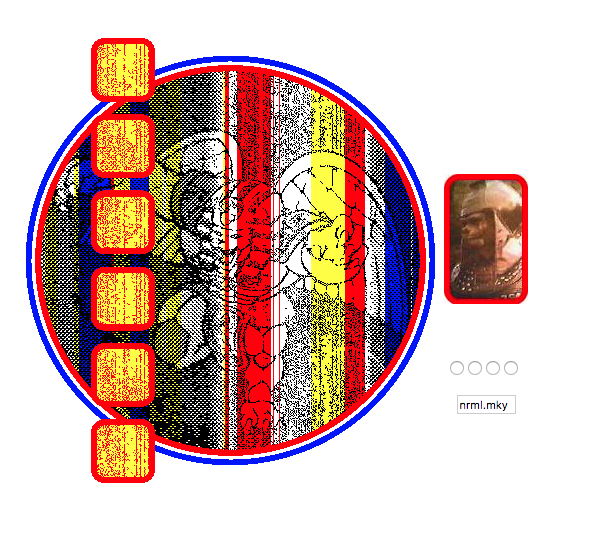Crank the Web is a browser that allows people to physically crank their bandwidth in order to see a website. Simply enter a URL, start cranking, and text and images appear in the browser window. The idea behind Crank the Web is to combine ancient forms of automation with today’s digital telecommunications technology. All bandwidth should be free and everyone should have access to the fastest speed connection. It is up to you to physically crank your bandwidth so that your internet connection will rely on your personal strength, not personal wealth.[1]
I/O/D represents the coming together of Matthew Fuller, Colin Green, and Simon Pope. The group began their Web activism in 1994, with multimedia presentations via floppy disk. Their work became infamous for engulfing a computer, reducing it to a frustrating series of seemingly random generated dialogue boxes that would often crash the system. Soon after, I/O/D made the Web its target with The Web Stalker. A new type of browser, The Web Stalker offered a completely different interface for moving through pages on the World Wide Web. The user opens a URL, then watches as the "Stalker" blows open the structure and source code for that Web site, stripping the site of all content and design, and leaving only a two-dimensional mnemonic showing a skeletal map of how the Web is linked together. [1]
I/O/D 4: The Web Stalker was a new kind of web browser that decomposed websites into separate sets of entities. The texts of the site were treated as the primary resource, but were stripped of most of their formatting. Links from one file to another were mapped in a network diagram, which allowed users to visualize their path through the clusters, skeins, and aporias of files. This Map built dynamically as a Crawler function gradually moved through the network. We saw the logical structure of websites, established by the links in and between them, as another key resource, and we wanted the software to act in a modular manner, with users calling up functions, each with their own separate window, only when they needed them. [2]
No Fun is the video of an online performance in which we simulated a suicide and filmed viewers’ reactions. It is staged on a popular website that pairs random people from around the world for webcam-based conversations. Thousands watched him hanging from the ceiling, swinging slowly for hours, without being able to know whether it was reality or fiction. They unwittingly became the subject of the work. [1]
Brandon Tauszik’s GIF images of black barbers in Oakland, California reveal the resolve of a group of ardent professionals. The project illuminates the position of barbers as conduits of black communities; of Oakland. Behind these portraits are the aspirations of men who are not just making a living, but who see the value of their labors in the development of black community life. Like the GIF images themselves, these men and their shops are not static. Even as they stand behind their barber’s chair with arms propped up clutching the clippers, they are constantly in motion and in tune with the comings and goings of the people in their city.[1]
Robot music is an ongoing robotic research project between Goto80 and Jacob Remin, centered around automation, creation and loss of control. The project was initiated in 2017 and has been shown in various forms at Illutron (Copenhagen), Algomech Festival (Sheffield), Internetdagarna (Stockholm), 34C3 (Leipzig), among others.[1]
Central to robot music, is robotic arms that play music on a Commodore 64 and other sound machines. The robot remixes pre-made songs, or makes its own. While the robot performs, the artists sit next to it to talk to people about robots being “creative” and “stealing our jobs”. [1]
Satellite Lamps is a project that reveals one of the most significant contemporary technology infrastructures, the Global Positioning System (GPS).[1]
“Satellite Lamps shows that GPS is not a seamless blanket of efficient positioning technology; it is a negotiation between radio waves, earth-orbit geometry and the urban environment. GPS is a truly impressive technology, but it also has inherent seams and edges.”[1]
Satellite Lamps is a series of lamps that change brightness according to the accuracy of received GPS signals, and when we photograph them as timelapse films, we start to build a picture of how these signals behave in actual urban spaces.[1]
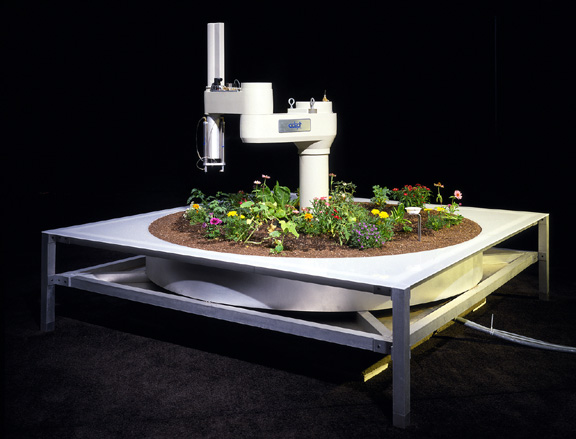 The Telegarden (1995-2004), Ars Electronica Museum, Linz Austria.
The Telegarden (1995-2004), Ars Electronica Museum, Linz Austria.
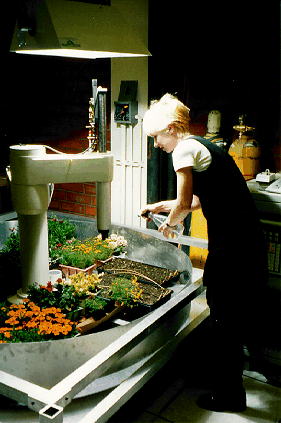 Rosemary Morris at the garden
Rosemary Morris at the garden
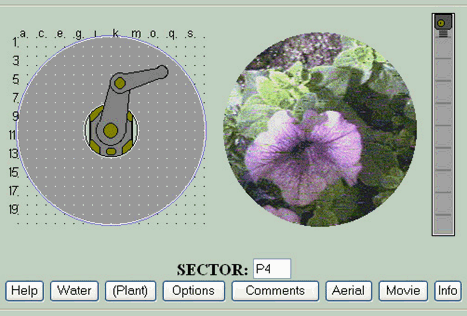 Telegarden Interface
Telegarden Overview, Video by Adam Susaneck
Telegarden Description
Telegarden Interface
Telegarden Overview, Video by Adam Susaneck
Telegarden Description
The Telegarden is an art installation that allows web users to view and interact with a remote garden filled with living plants. Members can plant, water, and monitor the progress of seedlings via the tender movements of an industrial robot arm.[1]
Users participate in tending a living garden using a remote industrial robot to perform simple requests such as watering, planting and viewing the garden. Users are presented with a simple interface that displays the garden from a top view, the garden from a global composite view and a navigation and information view in the form of a robot schematic. By clicking on any of the images one commands the robot to move to a new absolute location or one relative to where they just were. The robot, upon completion of the move, will return a refreshed image of the garden. In this manner one can explore the entire garden remotely using simple mouse clicks. [2]
The robot performs users requests on a first come first server bases. Because of this multiplexing of the robot more than one user can be within the garden at once. By using the member tracker overlay one can not only see who but where other members are within the garden. If they wish to communicate with these other members they can enable or enter the village square. The village square is a public message chat system where people within the garden can discuss subjects of their choice. [2]
To water the garden users align the camera image over the section of the garden to water and press the water button. This will command the robot to release a small squirt of water over the area in view. To plant a seed a user is first requested to find a spot that is relatively empty (there are no restrictions to where one can plant) and then asked to press the plant button. This will cause the robot to poke a small hole in the ground, proceed to the seed bowl, suck up a seed and deposit it back into the previously dug hole.[2]
The Telegarden is a community project where users interact not only with the garden but amongst themselves. The project was created to push the possibility of web interaction using customizable user options, chat areas, garden movie making, web cameras, etc.[2]
For Zombie & Mummy, Lialina and Espenschied are creating weekly episodes of a comic strip featuring the two title characters. Each episode is embedded in a colorful environment. Drawn on a Palm pilot, the cartoons themselves have a low-tech look, with no shades of gray and only 160x146 pixels per frame. They can be viewed online or downloaded for a palm device.[1]
Globalmove.us implements a combination of the Google Maps API and subversive javascript written by the artists to create frenetic drawings (earthworks even) built of Google Maps UI elements. The ability for JODI's hand crafted javascript to accomplish this feat is explicitly allowed and defined by code that is written, hosted and provided by Google. Were this work to be preserved by a collecting institution, how would one ensure that changes made by Google to their Maps API does not destroy the functions implemented by the artist's code?
Superbad is a noted web art installation created by Ben Benjamin in 1997.
It received a 1999 Webby in the "Weird" category, and was one of nine websites featured in the Whitney Museum Biennial in 2000. Superbad began as a test bed for Benjamin's web design for technology corporations ranging from E! Online to Nippon Telegraph and Telephone. It heavily samples Japanese popular culture. [1]
The site consists of a veritable maze of inter-linked visual, conceptual "subprojects" ranging from two-tone and technical-looking to wacky, colorful, and even bizarre. Often a subproject will have clickable elements linked to other pages within that subproject, or to another, or that just provide visual richness (for example, the "follow" subproject has a grid of circles with arrows that follow the mouse cursor; each circle is a link to a different page within the site). Some of the pages contain narrative elements. There are 143 different pages. His main page serves as a hub to all his subprojects. Clicking anywhere on the "bad" will link to somewhere within each subproject. [1]



